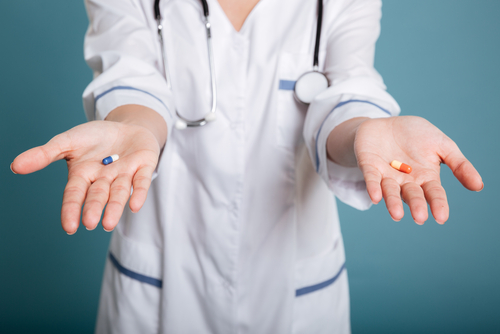Relapsing MS Patients May Fare Better on Zeposia Than Aubagio

Treatment with Zeposia (ozanimod) significantly reduces the risk of relapse, decreases the proportion of patients experiencing a relapse, and has a better safety profile than Aubagio (teriflunomide) for people with relapsing multiple sclerosis (MS), according to an indirect comparison of clinical trial data.
The comparison was published in the journal Multiple Sclerosis and Related Disorders in a study, “Matching-Adjusted Indirect Treatment Comparison of Ozanimod Versus Teriflunomide for Relapsing Multiple Sclerosis.”
Bristol Myers Squibb‘s Zeposia and Sanofi’s Aubagio are two oral disease-modifying therapies (DMTs) approved in the U.S. for relapsing forms of MS.
While working through distinct mechanisms, both medications are thought to lower the number of immune cells in the brain and spinal cord, slowing disease progression and reducing MS symptoms. However, whether one of these treatments is more effective and safer than the other is currently unknown.
In the absence of head-to-head trials, researchers from the Providence Brain and Spine Institute in Oregon and Bristol Myers Squibb designed a study to compare these two medications indirectly in patients with relapsing MS using data from multiple worldwide clinical trials. Bristol Myers Squibb funded the study.
Selected Phase 3 studies evaluating the safety and efficacy of Aubagio included ASCLEPIOS I (NCT02792218), ASCLEPIOS II (NCT02792231), TOWER (NCT00751881), OPTIMUM (NCT02425644), TENERE (NCT00883337) and TEMSO (NCT00134563).
The duration of these studies ranged from 48 weeks (nearly one year) to 130 weeks (about 2.5 years). Some of these trials tested two doses of Aubagio, but only patients given the 14 mg dose were included in the analyses.
The Phase 3 trials SUNBEAM (NCT02294058) and RADIANCE (NCT02047734) were selected for Zeposia. SUNBEAM lasted 56.9 weeks (just over one year), while the duration of Part B of RADIANCE was 104 weeks (about two years).
Overall, patients in Zeposia and Aubagio groups were similar in age, disability scores before entering the trial, MS subtype, number of prior relapses in the previous years, number of inflammatory brain lesions, and number of patients without any such lesion.
However, there were fewer female patients (65% vs. 69%) and significantly more Eastern European patients (90% vs. 31%) in the Zeposia trials than in the Aubagio studies. Furthermore, those in the Aubagio trials had a longer mean disease duration (7–9 years) after diagnosis compared with the Zeposia group (6–7 years).
The team used a matching-adjusted indirect comparison method to correct for trial differences and compare outcomes for those who received 1.0 mg of Zeposia and 14 mg of Aubagio.
Efficacy measures included the annualized relapse rate, the proportion of patients who relapsed, and the confirmed disability progression at three and six months.
Researchers also assessed safety outcomes such as adverse events, serious adverse events, and discontinuations due to these events.
Results showed that, compared with Aubagio, Zeposia was associated with a significantly lower relapse rate and a lower proportion of patients experiencing relapse.
Moreover, Zeposia demonstrated statistically significant superiority in confirmed disability progression at three months, meaning that fewer patients receiving this treatment experienced a confirmed disability progression lasting at least three months. Disability progression lasting at least six months was also lower in Zeposia patients, but the difference was not statistically significant.
Compared with patients who received Aubagio, those treated with Zeposia also were significantly less likely to experience any adverse event or serious adverse event, or to discontinue treatment because of a side effect.
“Overall, these findings suggest that, over the study duration of 1 to 2 years, [Zeposia] had a favorable benefit-risk profile compared with [Aubagio] for efficacy and safety outcomes,” the researchers wrote. “Direct comparison studies would help validate the findings of the present analysis.”
“[Real-world] comparative effectiveness studies would provide further evidence for decision-makers, inform clinical decision-making, and aid in characterizing the benefit-risk differences across DMTs currently used to treat patients with [relapsing MS],” they added.






